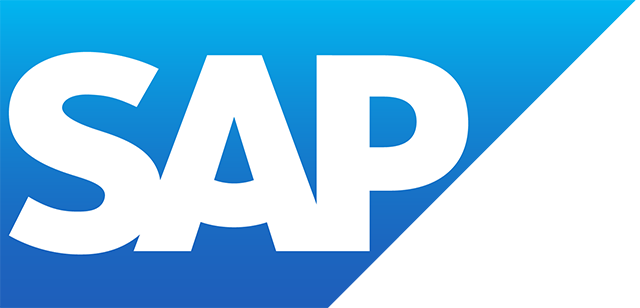SAP POS
Filter By
Browse By
- SAP Analytics and AI
- SAP Application Development and Integration
- All SAP Application Development and Integration
- SAP ABAP
- SAP ABAP Development Tools
- SAP ABAP Test Cockpit
- SAP API Management
- SAP BAPI
- SAP Basis
- SAP BRF
- SAP Business Application Studio
- SAP CMS
- SAP Design Studio
- SAP Development Tools
- SAP DevOps
- SAP EAI
- SAP EDI
- SAP Extension Suite
- SAP Fiori
- SAP Fiori Elements
- SAP Integration Suite
- SAP Low Code Application Development
- SAP Low Code Automation
- SAP Netweaver
- SAP Release Management
- SAP UI5
- SAP Web Application Server
- SAP Web IDE
- SAP Business Process Management
- SAP Center of Excellence
- SAP CIO
- SAP Customer Experience
- SAP Data and Data Management
- All SAP Data and Data Management
- SAP BW
- SAP BW/4HANA
- SAP Crystal Reports
- SAP Data Archiving
- SAP Data Center
- SAP Data Governance
- SAP Data Integration
- SAP Data Migration
- SAP Data Quality
- SAP Data Services
- SAP Data Strategy
- SAP Data Visualization
- SAP Data Warehouse Cloud
- SAP DMS
- SAP Document Control
- SAP EIM
- SAP ETL
- SAP ETL Tools
- SAP HANA
- SAP HANA Administration
- SAP HANA Deployment Infrastructure
- SAP HANA Studio
- SAP Master Data
- SAP Master Data Governance
- SAP MDM
- SAP Enterprise Architect
- SAP Enterprise Asset Management
- SAP ERP
- SAP Finance
- All SAP Finance
- SAP Accounting
- SAP AR AP
- SAP Asset Accounting
- SAP Billing Systems
- SAP BPC
- SAP BRIM
- SAP Cash Management
- SAP Central Finance
- SAP Controlling
- SAP COPA
- SAP Cost Center Accounting
- SAP Currency Risk
- SAP e-invoicing
- SAP FICO
- SAP Finance Automation
- SAP Advanced Financial Closing
- SAP Financial Consolidation
- SAP Financial Planning
- SAP FX Risk
- SAP General Ledger
- SAP Global Tax Management
- SAP Hyperion
- SAP Order to Cash
- SAP Payment Processing
- SAP Profitability Analysis
- SAP Rebate Management
- SAP S/4HANA Finance
- SAP SWIFT Compliance
- SAP Treasury Management
- SAP Universal Journal
- SAP Governance Risk and Compliance
- SAP Human Capital Management
- SAP Intelligent Technologies
- SAP Platform and Technology
- All SAP Platform and Technology
- SAP Business Technology Platform
- SAP Cloud
- SAP Cloud Connector
- SAP Cloud Integration Platform
- SAP Cloud Migration
- SAP Cloud Platform
- SAP Cloud Providers
- SAP Cloud Strategy
- SAP Digital Signature
- SAP Container Platform
- SAP HANA Enterprise Cloud
- SAP Digital Asset Management
- SAP Smart Forms
- SAP HEC
- SAP Digital Integration Hub
- SAP Hyperscalers
- SAP Infrastructure
- SAP Messaging
- SAP Quality and Testing
- SAP Security
- SAP Spend Management
- SAP Supply Chain Management
- All SAP Supply Chain Management
- SAP APO
- SAP Asset Management
- SAP Business Network
- SAP Digital Manufacturing Cloud
- SAP Digital Twin
- SAP EWM
- SAP IBP
- SAP Inventory Management
- SAP Label Printing
- SAP Logistics
- SAP Manufacturing
- SAP Manufacturing Automation
- SAP MES
- SAP MII
- SAP MM
- SAP MRO
- SAP MRP
- SAP Order Management
- SAP Plant Maintenance
- SAP PLM
- SAP Production Planning
- SAP S&OP
- SAP SD
- SAP SPM
- SAP Supply Chain Planning
- SAP Track and Trace
- SAP Transportation Management
- SAP System Administration
What Is Point of Sale?
Point of Sale (POS) represents the customer payment transaction for a brick and mortar or online retailer. As part of the POS, retailers rely on hardware and software to complete the transaction and process the payment.
POS: More than a Transaction
While the POS may appear simply as a transactional activity, it has implications for customer experience and profit for the retailer. Customers want and expect a checkout process that is quick, hassle-free, and easy to navigate.
What Is Point of Sale?
Point of Sale (POS) represents the customer payment transaction for a brick and mortar or online retailer. As part of the POS, retailers rely on hardware and software to complete the transaction and process the payment.
POS: More than a Transaction
While the POS may appear simply as a transactional activity, it has implications for customer experience and profit for the retailer. Customers want and expect a checkout process that is quick, hassle-free, and easy to navigate.
The POS is also critical for understanding customer preferences in terms of product selection and variety. Retailers gain valuable analytical insight into which products are selling, at what time of day, and in what quantity. This can provide better decision-making for the marketing and sales teams.
Lastly, integration between the POS, inventory management, and operational systems is critical for maintaining supply and demand balance and identifying potential revenue opportunities. Replenishment is essential for retailers to ensure the product is on the shelf where and when customers need it. Data from the POS should also be shared with suppliers to collaborate on product promotions and new product introductions.
SAP Customer Checkout Application
SAP’s point of sale solution is SAP Customer Checkout. According to SAP, the following are key POS capabilities of the application:
- Manage sales, returns, payments, coupons, and gift cards with a central POS system
- Access real-time reports, control sales and financial results, and extend and scale the application with flexibility
- Integrate with SAP S/4HANA or other ERP systems, or use as a stand-alone application
Key Consideration for SAPinsiders
- Case Study: AGRAVIS Transforms Its POS System for the Future. In this SAP case study, German agricultural trading company AGRAVIS needed to replace its legacy POS system to meet new cash register regulations and future POS transaction requirements. The company wanted a solution that integrated with its current software landscape, but also created a single source of truth of real-time sales and inventory data. AGRAVIS also required a solution that enabled capabilities for future omnichannel retailing. It chose the SAP Customer Checkout application with native SAP S/4HANA integration and linkage to existing legacy warehouse management systems.
A vendor in the point-of-sale space includes: Verbella.
365 results
-

 Premium
Premium
23 Ways to Squeeze Better Performance from APO DP Processing and Reporting
Reading time: 11 mins
APO Demand Planning (DP) developers have a number of areas to be aware of that could negatively affect performance. This list of 23 DP performance tips explains how to avoid bottlenecks and why they can occur. Key Concept SAP Business Information Warehouse (BW) is the engine that supports APO DP analysis and reporting. Proper setup...…
-

 Premium
Premium
An Organization that Is Serious about Processes Is Serious about HR
Reading time: 24 mins
Uncover how SAP HR implementations can require significant business process reengineering efforts. Even if your HR system has already gone live, you can benefit from this fresh perspective on how to coexist successfully with other departments. Key Concept Business process reengineering is a management approach aiming at improvements by means of elevating efficiency and effectiveness...…
-

 Premium
Premium
SAP Bank Communication Management: What You Need to Know
Reading time: 30 mins
Learn the key advantages of using the SAP Bank Communication Management module. Discover how SAP Bank Communication Management increases the efficiency and automation of payment processing within organizations. Key Concept SAP Bank Communication Management is a relatively new module of SAP’s Financial Supply Chain Management component. SAP Bank Communication Management can be used to efficiently...…
-
-

Intercompany Accounting for Product Support Service and Subscription Software with SAP
Reading time: 10 mins
By Sachin Bhutani, Sr SAP Finance BPA, KLA The popularity of software-defined networking (SDN) and network functions virtualization (NFV) has revolutionized the traditional communication network architectures and has transformed the way communication service providers (CSP) design their network infrastructure. These changes have driven network equipment industry revenue towards product support services and limited term subscription...…
-

Mastering the Transition: What to Expect from Your AMS Provider Post S/4HANA Migration
Reading time: 5 mins
As businesses migrate to SAP S/4HANA for streamlined operations and enhanced performance, they should expect their Application Management Services providers to deliver comprehensive support, continuous improvement, user adoption training, security oversight, and a flexible resource model to optimize the benefits of their new systems.
-

Modernizing SAP BW: The Path to Business Data Cloud
Reading time: 5 mins
As SAP NetWeaver BW 7.5 approaches the end of mainstream maintenance in 2027, customers must decide whether to maintain their existing systems or transition to a cloud-ready future with SAP Business Data Cloud, which offers a pathway to modern capabilities like AI and machine learning while preserving valuable data assets.
-

 Premium
Premium
Configure SAPSprint for Secure Server-Based Printing on Windows
Reading time: 146 mins
You can have as wide and varied a range of printing needs as you have business needs. Learn about the available SAPSprint options — what they are and what they do — so you can help your organization meet its specific printing needs. Key Concept Secure Network Communications (SNC) integrates an external security product with...…
-
-

 Premium
Premium
Which A/R Underpayment Option Should You Use: Partial Payment or Residual Item?
Reading time: 11 mins
When a customer makes a payment for an invoice that is a great deal less than the full invoice value, the A/R user has several choices of how to process the underpayment. Both users and consultants are often confused about the difference between two of those options – partial payment and residual item – because...…
-

 Premium
Premium
Set Up Rule-Based Territory Definition in SAP CRM 7.0
Reading time: 18 mins
Many organizations use territory management to organize their sales force. In SAP CRM 7.0, SAP fundamentally changed the design of territory management by introducing the concept of rule-based territory definition. See how to define the scope of territories and then model and assign them. Key Concept Business rule-based territory definition lends flexibility to defining the...…
-

 Premium
Premium
Steps to Safely Define and Customize Business Roles and Authorizations in SAP CRM
Reading time: 18 mins
See how to define a business role in customizing, assign it to a position in an organizational model, and then analyze its content. Key Concept Business roles and authorizations are prerequisites for SAP CRM upgrades or cutovers. This means that during the user acceptance test, users should test each business scenario using appropriate profiles and...…
Become a Member
Unlimited access to thousands of resources for SAP-specific expertise that can only be found here.
Become a Partner
Access exclusive SAP insights, expert marketing strategies, and high-value services including research reports, webinars, and buyers' guides, all designed to boost your campaign ROI by up to 50% within the SAP ecosystem.
Upcoming Events
Related Vendors
Your request has been successfully sent


